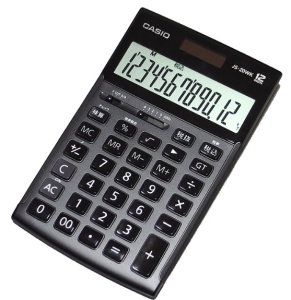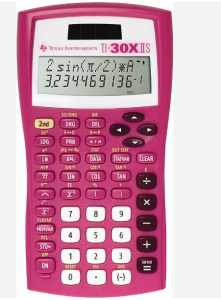I.Introduction

Whether you are a beginner or an experienced user, this calculator guide will provide you with comprehensive information about Assistant to help you navigate the digital world with greater confidence and proficiency, improve your computing skills, and unlock more possibilities. Let’s start exploring this fascinating world of the calculator!
II. Common Calculator Types
In the modern world of computing, there are various different types of calculators, each designed for specific tasks and uses. Understanding these common calculator types is important to choosing the right tool and becoming proficient in using them. Here are a few common calculator types:
scientific calculator:
Function and purpose: Scientific calculators are commonly used to solve math, science, and engineering problems. They feature a variety of mathematical functions such as trigonometric, logarithmic, and exponential functions, as well as other advanced functions such as root finding, integration, and differentiation.
How to use the scientific calculator: By entering mathematical expressions, you can use the scientific calculator to solve a variety of complex mathematical problems, including algebra, geometry, and trigonometry problems.

Financial Calculator:
Applications in Finance: Financial calculators are widely used in financial planning, loan and investment analysis. They can be used to calculate financial metrics such as loan payments, retirement savings, return on investments, and more.
Basic functions of financial calculator: Financial calculator includes functions such as present value, future value, net present value and internal rate of return to help users make financial decisions.
Programming calculator:
Use in programming and engineering tasks: Programming calculators are useful tools for engineers and programmers. They allow users to write and run small programs, perform repetitive computational tasks, and store variables and equations.
How to program a calculator to perform specific tasks: By writing custom programs, you can use a programmed calculator to perform engineering tasks such as control system design, data analysis, and simulation.
Graphing Calculator:
Mathematics and Scientific Graphing Applications: Graphing calculators focus on graphing and are suitable for use in mathematics, science and engineering fields. They can be used to plot graphs of functions, scatter plots of data, and visualize solutions to equations and inequalities.
Basic steps for creating and analyzing graphs: Graphing calculators often provide functionality to enter mathematical expressions, select a plotting range, and customize graph styles to better understand mathematical and scientific concepts.
III. How to choose the calculator that’s right for you
How to choose the calculator that’s right for you:
Consider your needs and usage:
Before choosing a calculator, first clarify your needs and uses. Different types of calculators are suitable for different tasks and fields. Consider the following questions:
What types of calculations do you typically need to perform?
Are you a student, professional, or someone working in a specific field?
Do you need to solve a math, finance, engineering, or other type of problem?
Make sure your calculator choice matches your needs to better suit your daily tasks and projects.
Consider budget and brand:
Learn about the price ranges of different types of calculators and determine your budget. Different makes and models of calculators vary in price. Some well-known brands often offer products of higher quality and reliability, but may be more expensive. When considering your budget, also consider the long-term investment value of a calculator.
Consider additional features and optional accessories:
Some calculators have additional features and optional accessories that may increase the calculator’s versatility and suitability. Consider the following factors:
Do you need a calculator with special capabilities, such as statistical analysis, programming capabilities, or graphing?
Are there optional accessories, such as chargers, cases, or data cables, that can enhance the calculator experience?
Do you need a specific requirement for the screen size, keyboard layout, or appearance of your calculator?
Taking these factors into consideration, you can make a more informed choice about the calculator that suits your needs. Make sure the calculator fits your work and study requirements but also fits your budget. Different tasks require different tools, so choosing a calculator that’s right for you will help improve your efficiency and problem-solving skills.
IV. Basic principles for using calculators
Basic principles for using a calculator include:
Familiarize yourself with the operation: Know the buttons and functions of your calculator, and read the user manual to make sure you can operate it correctly.
Maintenance: Keep the calculator clean, avoid liquid or dust from entering the interior, and replace or charge the battery in time.
The sequence of operations: Perform calculations in the correct order of operations, especially in complex mathematical operations.
Avoid excessive pressure: Avoid pressing buttons too hard to avoid damaging the calculator.
Back up your data: If your calculator can store data, back it up regularly to prevent data loss.
Understand precision: Understand the precision and limitations of calculators, especially when high-precision calculations are required.
Take advantage of additional features: Take advantage of the calculator’s additional features, such as storage, programming, and graphing.
Practice: Improve proficiency and understanding of calculator functions by practicing using the calculator.
Find support: If you need help, find user manuals, online tutorials, and community resources to solve your problem.
STORE SAFELY: When your calculator is not in use, store it safely to prevent damage or loss.
VII.Maintenance and Troubleshooting for Calculators
Basic Maintenance:
Keep it Clean: Use a soft cloth or cotton swab to gently wipe the calculator’s surface to remove dust and dirt. Avoid using chemical cleaners to prevent damage.
Avoid Liquids: Calculators are not liquid-resistant. Keep them away from water, beverages, or other liquids to prevent internal damage.
Screen Protection: If your calculator has a screen, consider using a screen protector to prevent scratches and dirt.
Battery Replacement: If your calculator uses batteries, replace them regularly and ensure the batteries do not leak to avoid internal damage.
Power Off When Not in Use: Turn off the calculator when not in use to prolong battery life and prevent unnecessary power consumption.
1. Common Issues and Solutions
Calculation Errors: If calculations are incorrect, double-check your input for accuracy and follow the correct order of operations.
Unresponsive Buttons: If buttons are not responding, check for dust or dirt beneath the buttons, clean the buttons, or press them firmly.
Battery Problems: If the calculator won’t turn on, replace the batteries and ensure correct battery placement, checking for polarity.
Screen Issues: If the screen displays anomalies, check for scratches or dirt, clean the screen, or consider screen replacement.
Programming Errors: If using a programming calculator and experiencing errors, review your code for errors and ensure correct syntax.
Calculator Freeze: If the calculator becomes unresponsive, try rebooting it, typically achieved by removing and reinserting the batteries.
If you encounter issues that cannot be resolved, consult the calculator’s user manual or online support resources, or consider seeking professional repair services. Regular maintenance and prompt resolution of minor problems will help keep your calculator in good working condition.
